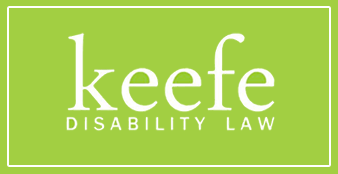
Diagnosed with eosinophilia or another eosinophil-associated disorder that makes holding a full-time job and participating in substantial gainful activity (SGA) impossible? You may qualify for Social Security Disability Insurance (SSDI). However, the path to obtaining benefits is long and arduous for most applicants – and especially so for those with an eosinophilic disease. Not only does the Social Security Administration (SSA) deny approximately 70 percent of initial claims, but because the Blue Book Listing of Impairments doesn’t specifically cover eosinophil disorders, you’ll have to work even harder than usual to prove you’re eligible for benefits.
Here’s what you need to know before applying for SSDI for a disabling eosinophilic disease, including how the accomplished legal team with Keefe Disability Law can help you explore your eligibility, navigate the unfamiliar and intimidating application process, and fight for the benefits you deserve.
Basic SSDI Eligibility
SSDI is a government “insurance” program that provides monthly benefit payments to disabled individuals who’ve earned enough credits working in jobs that contribute to Social Security via payroll taxes. In addition to amassing sufficient work credits (generally 40, 20 of which were earned within the past 10 years), your condition must be severe enough to prevent substantial gainful activity, and last – or be expected to last – for at least one year or result in death.
Wondering if your eosinophil disorder qualifies you for SSDI benefits? Our skilled Boston Social Security disability lawyers can help.
Understanding Eosinophils and Eosinophilia
Eosinophils are white blood cells that support the immune system by regulating inflammation and helping the body fight off certain types of infections. When the bone marrow produces excessive eosinophils or the body recruits too many of the powerful white blood cells to a specific site, eosinophilia – or elevated eosinophil levels – can result. High eosinophil levels can indicate any number of health problems, ranging in severity from hay fever to cancer. However, when bloodstream, tissue, or organ eosinophilia occurs without a known cause, an eosinophil-associated disease may be to blame.
Disabling Eosinophilic Disorders
Eosinophilia is linked to a number of disabling conditions, including:
- Eosinophilic cystitis, a painful inflammatory bladder disease
- Eosinophilic esophagitis, an immune system condition that narrows the esophagus and prevents it from contracting properly
- Eosinophilic fasciitis, an inflammatory disorder that affects the connective tissue that runs throughout the body
- Eosinophilic asthma, a rare and severe form of asthma often diagnosed in adults
- Eosinophilic pneumonia, a group of rare respiratory infections
- Eosinophilic gastrointestinal disorders, which can affect the stomach, small intestine, large intestine, and colon, resulting in inflammation and tissue damage
- Eosinophilic granulomatosis with polyangiitis (or Churg-Strauss Syndrome), an inflammatory blood vessel disease affecting the lungs, sinuses, heart, and various organ systems
- Eosinophilia–myalgia syndrome, a severe, multisystem disorder caused by an accumulation of eosinophils in the body
- Hypereosinophilic syndrome, a group of blood and organ disorders caused by excessive levels of eosinophils
Equaling a Listing
The Blue Book Listing of Impairments doesn’t include a section on eosinophilic-associated diseases. However, you can still win SSDI benefits if you can show that your condition is as impairing as one that qualifies. For example, if you’re applying for SSDI for eosinophilia–myalgia syndrome, you could use the medical criteria the Blue Book lists for fibromyalgia as a guideline. Completing a Residual Functional Capacity assessment with your doctor can also help you prove that your condition is disabling enough to qualify you for benefits. The RFC is a thorough evaluation that details your limitations and what you can do in the workplace despite your physical or psychological impairments. Providing extensive medical evidence from acceptable medical sources is particularly important when attempting to win SSDI benefits by equaling a listing.
Schedule a Consultation and Get Help With Your SSDI Application
Have questions about applying for SSDI for an eosinophil disorder? Complete our online contact form or call Keefe Disability Law at 508-283-5500 to schedule an appointment for a free initial consultation. To learn more, request a complimentary download of our book, Unlocking the Mystery: The Essential Guide for Navigating the Social Security Disability Claims Process.
| Related Links: |

